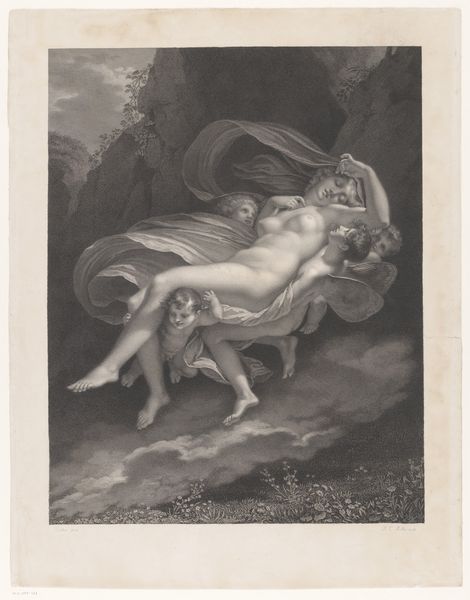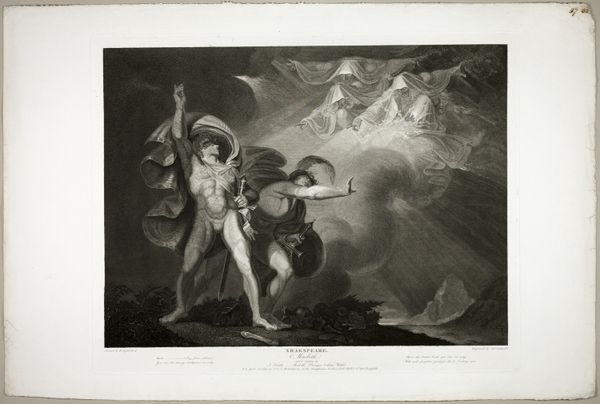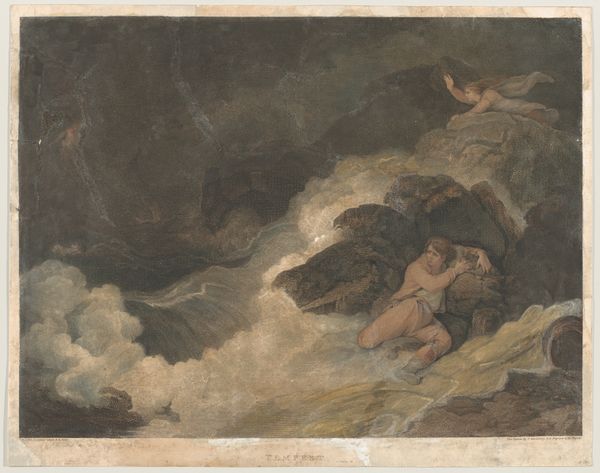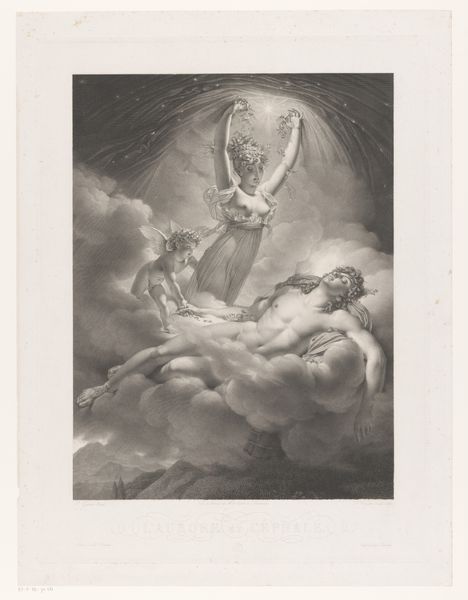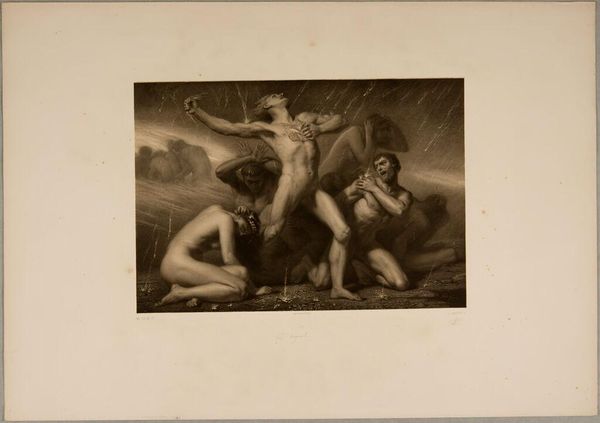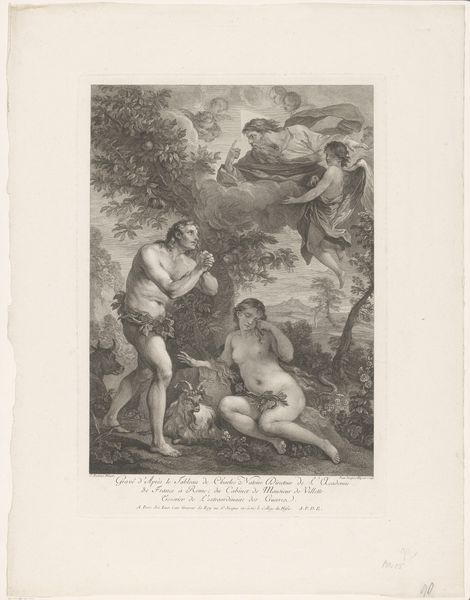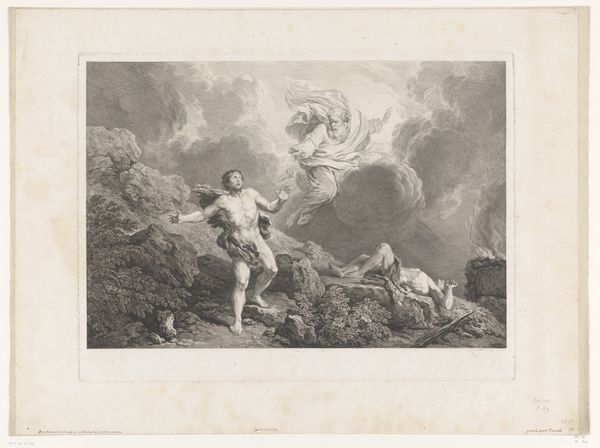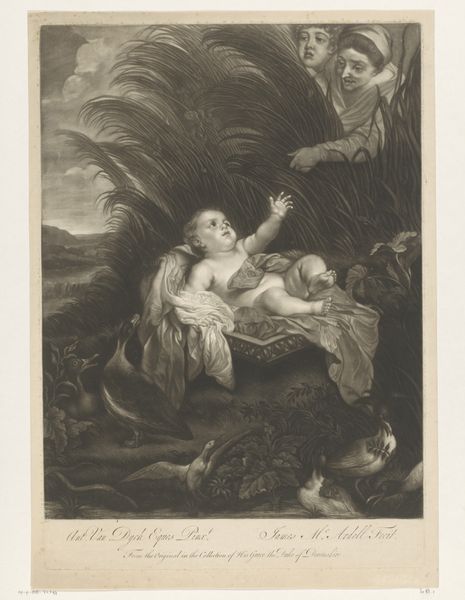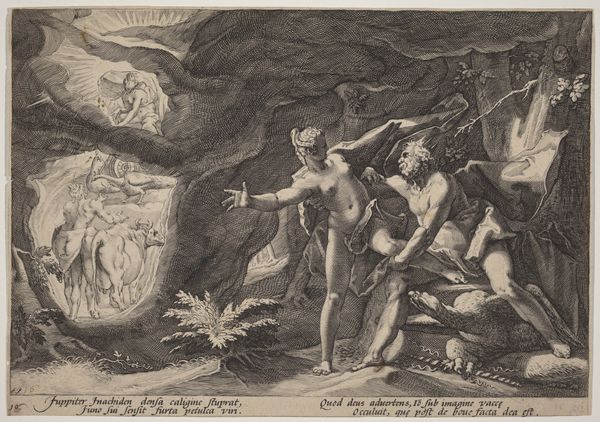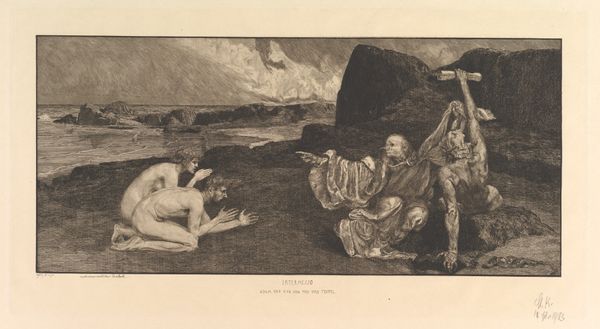
Dimensions: 11 1/2 x 14 7/8 in. (29.21 x 37.78 cm) (image)12 x 18 7/16 in. (30.48 x 46.83 cm) (sheet)18 1/16 x 22 1/8 in. (45.88 x 56.2 cm) (mat)
Copyright: Public Domain
John Raphael Smith created this mezzotint titled "Mercury Inventing the Lyre", sometime in the late 18th or early 19th century. Smith was a prominent printmaker during a period when printmaking was crucial for disseminating images and ideas. This artwork illustrates a classical myth, depicting the Roman god Mercury fashioning the first lyre from a tortoise shell. Mercury is often seen as a symbol of ingenuity, but his creation occurs here on the body of a reclining woman. As Mercury leans over her, she tilts her head away. The scene raises questions about creation, inspiration, and the historical objectification of the female form. The artist seems to have used the female body as a passive object upon which male creativity acts. Is there an attempt to develop an alternative narrative? Consider how cultural narratives are constructed and reinforced through art. How do images like this shape our understanding of gender roles and power dynamics, both in the past and today?
Comments
minneapolisinstituteofart over 1 year ago
⋮
According to the myth of Mercury—the Roman god of commerce, communication, and trickery—he was just a few days old when he stole a herd of cattle that belonged to Apollo. After killing one of the bulls, Mercury made strings of its guts, stretched them over a tortoise shell, and the lyre was born. Though initially angry with Mercury, Apollo forgave his crime in exchange for the new string instrument.
Join the conversation
Join millions of artists and users on Artera today and experience the ultimate creative platform.
